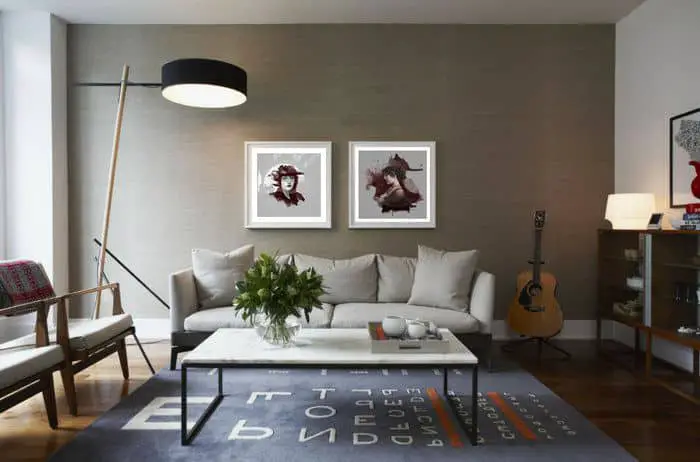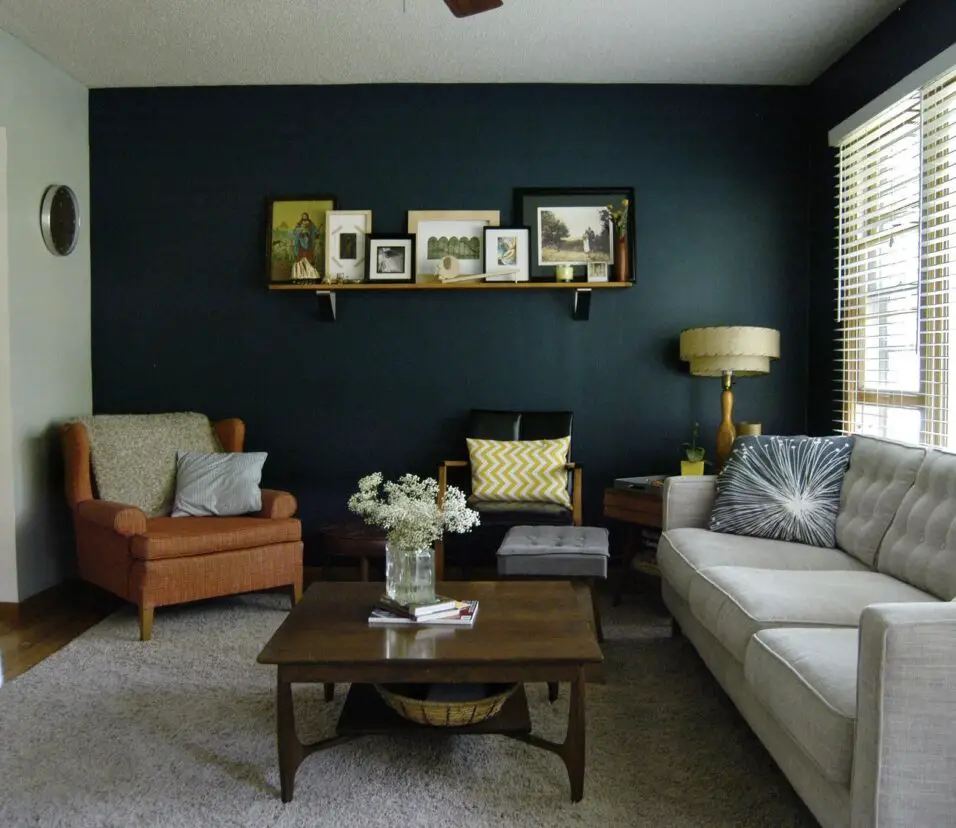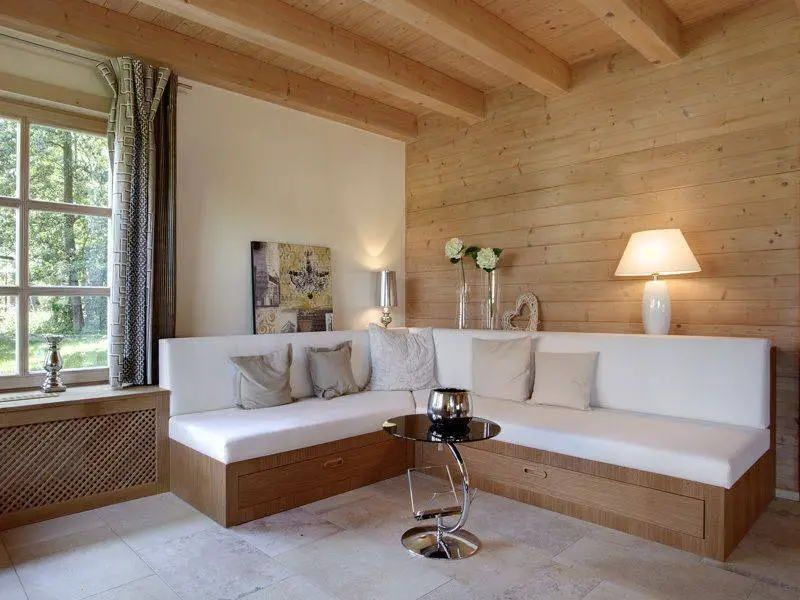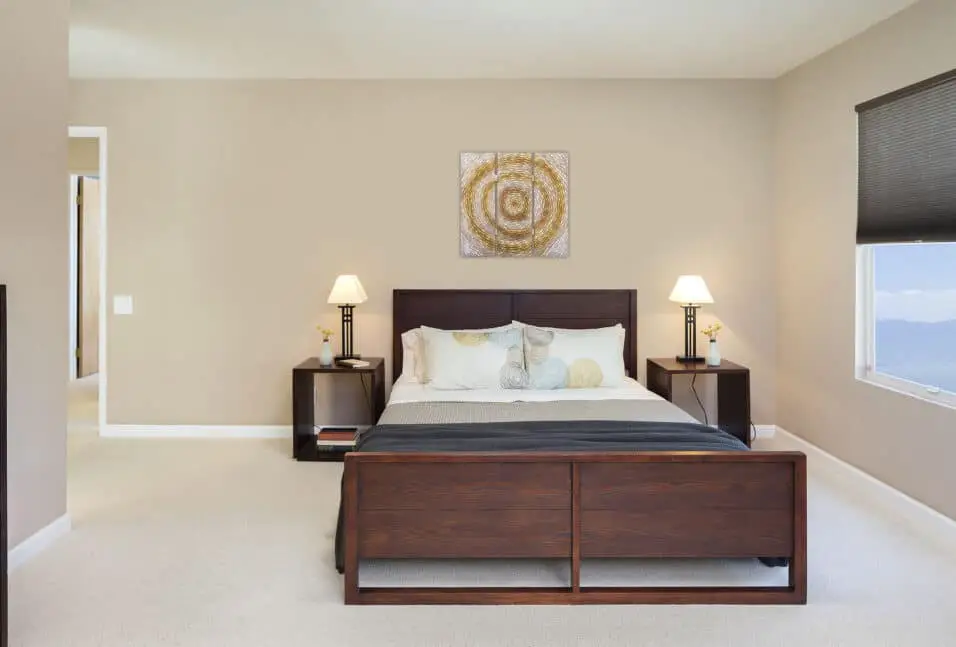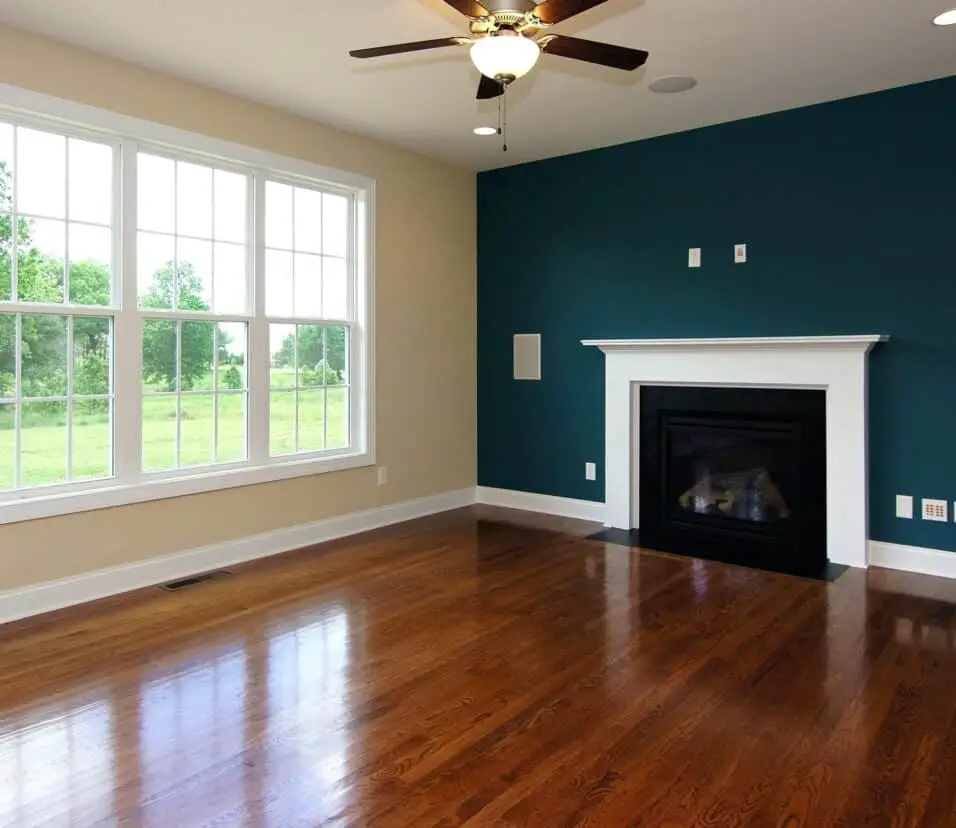How To Do Accent Walls
Introduction
How To Do Accent Walls: Accent walls have become increasingly popular in interior design as a way to add visual interest and personality to a space. Whether you want to create a focal point or simply enhance the overall aesthetic of a room, accent walls offer a versatile and creative solution. In this article, we will explore the concept of accent walls and provide you with step-by-step instructions on how to create your own stunning accent wall.
An accent wall is a single wall within a room that is painted or decorated differently from the other walls. It serves as a statement piece, drawing attention and creating a sense of drama or contrast. The purpose of an accent wall is to add depth, texture, and visual interest to a space, transforming it from ordinary to extraordinary.
When selecting the wall for your accent, consider the room’s layout and purpose. Typically, the wall that naturally draws the eye or serves as a focal point is the best choice. This could be the wall behind the bed in a bedroom, the wall with a fireplace in a living room, or the wall opposite the entrance in a hallway. By choosing the right wall, you can maximize the impact of your accent wall and create a stunning visual effect.
There are various ways to create an accent wall, allowing you to unleash your creativity and personalize your space. One popular option is to paint the accent wall in a bold, contrasting color that complements the overall color scheme of the room. This creates a striking visual contrast and adds a pop of color to the space. Another option is to use wallpaper with a unique pattern or texture on the accent wall, instantly transforming the room’s ambiance. Additionally, you can consider using materials such as reclaimed wood, stone veneer, or even fabric to create a textured accent wall that adds warmth and character to the room.
By following these instructions, you will be able to create a stunning accent wall that enhances the overall aesthetic of your space. Whether you choose to paint, wallpaper, or use alternative materials, the key is to select a wall that stands out and complements the room’s design. So, let your creativity flow and transform your space with a captivating accent wall!

What is the rule for accent walls?
Make some walls darker. When the walls are light, you want a darker color. Paint the accent wall the same color as the main wall, but two shades darker.
A lot of the time, interior designers paint or create an accent wall. This method gives a place beauty, visual interest, and a focus point. Different colors, patterns, and textures can be used to make accent walls that match the style of the room.
The right should stand out with accent walls. Accent walls are often placed across from entrances or behind couches and beds. This layout makes the main wall stand out as you walk in. This makes the room sound balanced and in tune.
Color ideas for walls that stand out. They should go with the room’s style and stand out against the walls. To make a difference, pick a darker or brighter shade of the same color or a color that goes with the palette. Accent walls can be made with soft tones for sophistication or bright colors for fun.
Use color, design, and texture to make accent walls. Walls can be decorated with cutouts, wallpaper, and textured paint. You can use these things to decorate the room with lines, flowers, and geometric shapes. Patterns and textures on accent walls should go with the overall style without taking over.
Accent walls should stand out to make the design of a room better. A room can stand out if you pick the right accent wall, color, and style. Accent walls that are bright, striped, or rough can make any room look better.
How do you put an accent on a wall?
18 Ideas for Creating an Accent Wall
- Opt for Dark Paint Colors. Photo via @gina.keilen.
- Add Energy with Vibrant Colors. Photo via @annalysejacobs.
- Pick Out Printed Wallpaper. Photo via @greydock.
- Create a Mural.
- Go with a Geometric Design.
- Paint Stripes on a Feature Wall.
- Use Wall Panels.
- Utilize Board & Batten.
Add some style to any room with wall ornaments. There are many ways to draw attention to or improve the look of a wall. You can use any paint, wallpaper, art, or style you want. The main idea of this post is to make a simple wall look nice.
Use paint:
Painting walls is a common and flexible way to decorate. Bright colors stand out and catch the eye. In a plain room, a bright blue or red wall might stand out. Use tinting, stenciling, or geometric shapes to add depth.
Background picture:
Wallpaper can be used instead of fancy decorations. Because wallpaper comes in so many colors, patterns, and styles, you can match it to any room’s style. Use the same pattern on one or more walls to make an accent wall.
Work of art:
Art is another way to decorate a room. A unique sculpture, framed photo gallery, or big painting on canvas can make a place look better. Match the art to the theme of the room. Try a bunch of different sizes, shapes, and arrangements to make an amazing show.
Items for decoration:
Along with paint, wallpaper, and drawings, ornamental items can also be used to decorate walls. Shelves, mirrors, rugs, and wall art. Mirrors make a room look bigger and brighter. It looks nice when there are drapes and plant and ornament shelves on the walls. Accents on the walls let you be creative and decorate the room. The paint, wallpaper, art, and home decor you choose should go with your style.
How to make a cheap accent wall?
Try temporary wallpaper
Accent walls work in foyers, behind headboards, and empty rooms. Bold vertical stripe wallpaper raises your ceiling, while horizontal stripes expand it. Accent walls provide visual appeal and personality to any room without breaking the wallet. A simple accent wall may change a living room, bedroom, or small office. This post shows how to make a great accent wall on a budget.
Correct Wall Choice:
Making a cheap accent wall starts with choosing the right wall. Consider the room’s layout and focus wall. Possibly the wall behind your bed, facing the door, or with a fireplace. After selecting a wall, measure its size to choose materials.
Preparation and Materials:
Prepare everything before starting. Cheap accent walls can be made using reclaimed wood, paint, wallpaper, or fabric. Every option is customized to your taste. You also need a level, hammer, nails, adhesive, paintbrush or roller, and measuring tape.
Installation:
Once materials and tools are ready, installation begins. Measure and cut reclaimed wood boards to fit your wall. Attach them evenly to the wall with nails or adhesive. Before painting or wallpapering, fix defects and prime. Follow manufacturer instructions to evenly apply paint or wallpaper.
The last touches:
Admire your accent wall after installation. Add shelving, artwork, or decorations to improve the look. These finishing touches will improve your accent wall and unite the decor.
Following these techniques, you can construct a gorgeous accent wall on a budget. Choose the right wall, gather the supplies, and carefully install. Any area may be stylish and appealing with a little ingenuity and effort.
Can any wall be an accent wall?
Finish a wall that doesn’t have any doors or windows.
Accent walls go with solid walls that don’t have any windows or doors. A good accent wall might not be in front of big windows that let in lots of natural light. Accent colors could be too much.
Look at your options:
Answer varies on the effect and the conditions of the room. You can use any wall as an accent wall, but you need to think about a few things. Size and layout of the room are important. It can be hard to plan accent walls in rooms that are too small or not level. Take away any furniture or other things that take away from the main wall.
Look at the room’s color plan and decor.
Bold accent walls might be too much for a color plan with a lot going on. Pick a wall that looks good and goes with the color plan. The function of a room should be looked at. You could put an accent wall behind the headboard in your bedroom or across from the main seats in your living room.
Accent walls can look nice with wallpaper, reclaimed wood, or textured panels, but paint is what most people use. Material choice should be based on the style and idea of the room. A shiny finish might look good with modern decor, while a wall made from old wood might look good with a country style.
An accent wall can be on any wall, but the size, shape, color, and style of the room are important. With these tips, along with the right materials and finishes, homes can make beautiful accent walls that go well with the rest of the room.
How do I choose an accent color?
So if you’re looking for a rule for using accent colors, here it is: think 60/30/10. 60% of your room should be the main color, 30% should be the main accent color, and the last 10% should be a secondary accent color. Choosing an accent color is an important decision when it comes to design and aesthetics.
Understanding the Purpose of an Accent Color:
An accent color is a hue that is used to draw attention to specific elements or areas within a design. It adds visual interest and can create a focal point. The right accent color can enhance the overall design and make it more visually appealing. It can also help convey emotions or messages, as different colors evoke different feelings.
Consider the Context:
When choosing an accent color, it is important to consider the context in which it will be used. Think about the overall theme or mood you want to convey.
Complementary or Contrasting:
One approach to selecting an accent color is to choose one that complements the main color scheme. Complementary colors are opposite each other on the color wheel and can create a harmonious and balanced look. For example, if your main color is blue, a complementary accent color could be orange. On the other hand, you can also opt for a contrasting accent color to create a bold and eye-catching effect. This involves choosing a color that is different from the main color scheme but still works well together.
Consider the Psychological Impact:
Colors have the power to evoke emotions and influence moods. It is important to consider the psychological impact of the accent color you choose. Think about the message you want to convey and the emotions you want to evoke when selecting an accent color.
Experiment and Test:
Lastly, don’t be afraid to experiment and test different accent colors. Use design tools or create mock-ups to see how different colors work together. Sometimes, what looks good on paper may not translate well in practice. Choosing an accent color requires careful consideration of the purpose, context, complementary or contrasting options, psychological impact, and experimentation. By doing so, accent walls can instantly transform a plain and ordinary space into a dynamic and visually appealing one.
How can accent walls be effectively incorporated into different room styles?
When it comes to incorporating accent walls into different room styles, there are several key factors to consider. Firstly, it is important to choose a wall that will serve as the focal point of the room. This could be a wall that already stands out due to its architectural features, such as a fireplace wall or a wall with large windows. Alternatively, you can create a focal point by selecting a wall that is strategically positioned, such as the one behind the bed in a bedroom or the wall opposite the entrance in a living room.
Once you have identified the wall that will serve as the accent wall, the next step is to choose the right color or pattern. The color or pattern you select should complement the overall style and theme of the room. For example, in a modern and minimalist room, a bold and vibrant color can create a striking contrast, while in a traditional or rustic room, a textured wallpaper or a natural stone finish can add depth and warmth.
What are some popular techniques or materials used to create accent walls?
When it comes to creating accent walls, there are numerous techniques and materials that can be used to achieve a stunning and visually appealing result. One popular technique is the use of paint. Painting an accent wall in a bold and contrasting color can instantly draw attention and create a focal point in a room. This technique is relatively simple and cost-effective, making it a popular choice for many homeowners.
Another popular technique is the use of wallpaper. With a wide range of patterns, textures, and designs available, wallpaper can add depth and visual interest to an accent wall. Whether it’s a subtle pattern or a bold statement print, wallpaper can transform a plain wall into a work of art. Additionally, removable wallpaper has gained popularity in recent years, allowing for easy changes and updates to the accent wall.
Aside from paint and wallpaper, other materials such as reclaimed wood, stone veneer, or even fabric can be used to create accent walls. Reclaimed wood adds warmth and a rustic charm to a space, while stone veneer can bring a touch of elegance and sophistication. Fabric accent walls, on the other hand, can add texture and softness to a room. These materials offer versatility and can be customized to suit different styles and preferences.
How do accent walls contribute to the overall aesthetic appeal of a space?
Accent walls play a crucial role in enhancing the overall aesthetic appeal of a space. By adding a focal point, they create visual interest and draw attention to a specific area or feature in a room. The use of contrasting colors, patterns, or textures on an accent wall can instantly transform a plain and monotonous space into a visually captivating one. It adds depth and dimension to the room, making it feel more dynamic and engaging.
Moreover, accent walls can also help to create a sense of balance and harmony in a space. They can be strategically placed to complement the existing architectural elements or furniture arrangement in a room. For example, an accent wall behind a bed in a bedroom can create a cozy and intimate atmosphere, while an accent wall behind a fireplace in a living room can add warmth and character to the space.
Overall, accent walls are a powerful tool in interior design that allows homeowners to express their creativity and personal style. They not only enhance the aesthetic appeal of a space but also contribute to its overall ambiance and atmosphere.
Are there any specific considerations or tips to keep in mind when choosing colors for accent walls?
When choosing colors for accent walls, there are several important considerations to keep in mind to ensure a successful and visually appealing result. The first consideration is to understand the purpose of the accent wall and how it fits into the overall design scheme of the space. The color chosen for the accent wall should complement the existing color palette and enhance the desired mood or atmosphere of the room.
Another important consideration is the size and lighting of the room. Darker colors tend to make a space feel smaller, while lighter colors can create a sense of openness and brightness. If the room is small or lacks natural light, it may be best to choose lighter colors for the accent wall to help create the illusion of a larger and brighter space.
Additionally, it is crucial to consider the color psychology and the emotions associated with different colors. Warm colors like red, orange, and yellow can create a cozy and energetic atmosphere, while cool colors like blue and green can evoke a sense of calmness and tranquility. Understanding the desired mood and ambiance of the room can help in selecting the appropriate color for the accent wall.
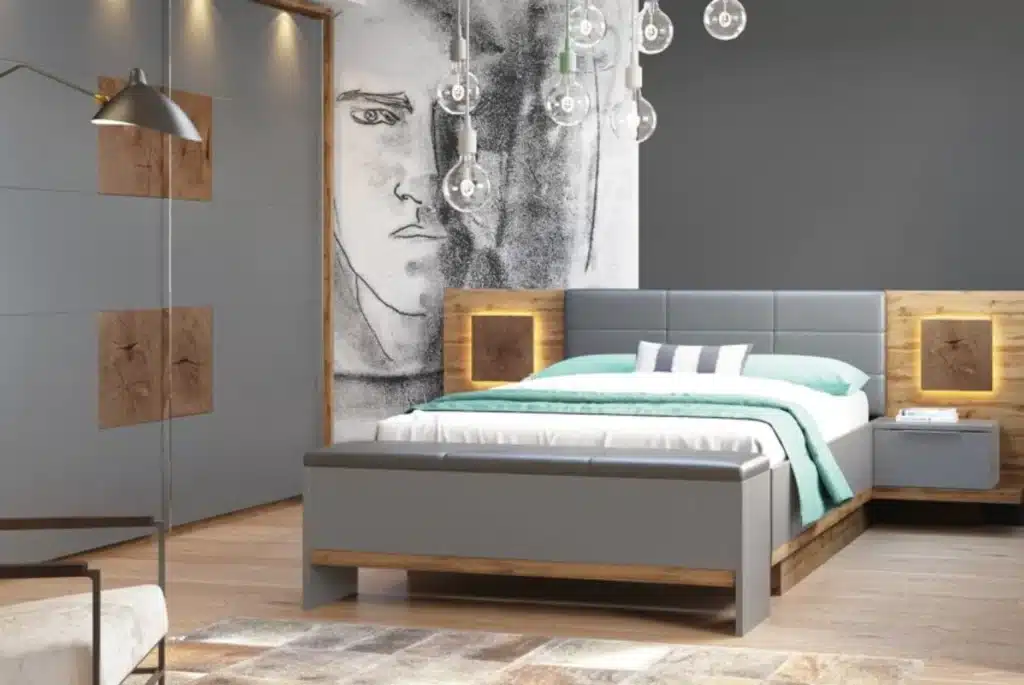
Conclusion
Accent walls have become a popular trend in interior design, offering a unique and stylish way to enhance the overall look and feel of a space. Whether you want to add a pop of color, create a focal point, or simply bring some visual interest to a room, accent walls can be a great solution. By following the instructions provided, you can easily create your own accent wall and transform any space into a stunning masterpiece.
One of the key benefits of accent walls is their versatility. They can be used in any room of the house, from the living room to the bedroom, and even in the kitchen or bathroom. This allows you to experiment with different colors, patterns, and textures, and truly personalize your space. Whether you prefer a bold and vibrant accent wall or a more subtle and understated one, the possibilities are endless.
Another advantage of stunning accent walls is that they are relatively easy to create. With the right tools and materials, you can complete this project in just a few simple steps. From choosing the perfect paint color or wallpaper to preparing the wall surface and applying the finishing touches, the process can be both enjoyable and rewarding. Plus, accent walls are a cost-effective way to update the look of a room without having to invest in a complete renovation.
Furthermore, accent walls can have a significant impact on the overall atmosphere and mood of a space. They can create a sense of depth and dimension, making a room feel larger and more spacious. Additionally, they can evoke certain emotions or set a specific tone. For example, a deep blue accent wall in a bedroom can create a calming and serene environment, while a vibrant red accent wall in a dining room can add energy and excitement.
Accent walls are a fantastic way to add personality, style, and visual interest to any room. By following the instructions provided, you can easily create your own accent wall and transform your space into a stunning masterpiece. Whether you prefer a bold and vibrant look or a more subtle and understated one, accent walls offer endless possibilities for creativity and personalization. So go ahead, unleash your inner designer, and give your home a fresh new look with an accent wall.




